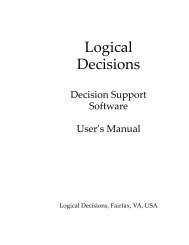AFTER VIOLENCE: 3R, RECONSTRUCTION, RECONCILIATION ...
AFTER VIOLENCE: 3R, RECONSTRUCTION, RECONCILIATION ...
AFTER VIOLENCE: 3R, RECONSTRUCTION, RECONCILIATION ...
You also want an ePaper? Increase the reach of your titles
YUMPU automatically turns print PDFs into web optimized ePapers that Google loves.
elation. As the quotes indicate it is not easy. V may feel that<br />
P, including those high up, have been lees than frank, that truth<br />
is not forthcoming, and sell forgiveness at a higher price in<br />
terms of truth currency. S may feel that truth is not<br />
forthcoming and hold back on amnesty. On the other hand, P (this<br />
is an hypothesis) may also feel that "the more truth the more<br />
amnesty", and exaggerate, adding crimes not committed, in the hope<br />
of getting off quickly. But by and large the model is clear: S, P<br />
and V meet in the same room, for a TRC hearing, with the<br />
possibility of arriving at closure together. If they so want.<br />
And, the same problem: if the theory works.<br />
First, even if, or indeed if, all truth is forthcoming it may<br />
be so horrendous, revealing evil intention behind the often<br />
irreversible harm that victim forgiveness is not forthcoming.<br />
Second, where is the steering of the hardened perpetrator?<br />
True, to have one's name revealed and associated with heinous<br />
crimes may lead to heavy social punishment, like ostracism. But<br />
the hardened perpetrator may not be deterred by that; social<br />
respect may not be what he is pursuing. To utter some truths and<br />
apologies may be a small price for amnesty, getting off scot free.<br />
What is there to prevent him from repeating the crime?<br />
Third, where is the justice? An economy is based on a market<br />
for the exchange of goods (including services), and a deal can be<br />
closed when the (positive) values are (about) equal. Is justice<br />
also based on a market for the exchange of bads/harms (including<br />
disservices), where closure can only be obtained when the<br />
(negative) values are about equal? As indicated in Chapter 3, is<br />
46
















